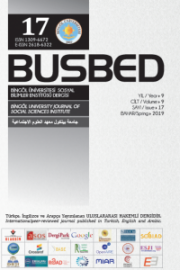ORTA DEMİR ÇAĞ’INDA ANADOLUMEZOPOTAMYA İLİŞKİLERİ BAĞLAMINDA İÇ ANADOLU BÖLGESİNİN TARİHİ VE POLİTİK COĞRAFYASI
HISTORICAL AND POLITICAL GEOGRAPHY OF THE ANATOLIAN REGION IN THE CONTEXT OF ANATOLIAN-MESOPOTAMIA IN THE MIDDLE IRON AGE
Author(s): Sırrı TİRYAKİSubject(s): Regional Geography, Historical Geography, Military history, Political history, Ancient World
Published by: Bingöl Üniversitesi Sosyal Bilimler Enstitüsü
Keywords: Middle Iron Age; Central Anatolia Region; Political Geography; Tabal Kingdom; Assyrian Attacks;
Summary/Abstract: The Hittite Empire disappeared from history together with the Aegean Migrations in the late 2nd millennium BC. With the disappearance of the Hittites from history, various city states were established in the Eastern Anatolia, Southeastern Anatolia, Central Anatolia, Northern Syria and the Eastern Mediterranean regions as the Late Hittite Kingdoms. Tabal kingdom, being one of these city states, continued to dominate the geography including Nevşehir, Kayseri, Aksaray and Niğde provinces. The strategic location of the Tabal Kingdom and its potential for raw materials became the most vital factor shaping the historical and political geography of Central Anatolia Region in the Middle Iron Age because the geography of Tabal was always a field of struggle for important political forces of the time such as Assyrian, Urartu and Phrygian.The military and political developments in the Central Anatolian Region in the Middle Iron Age were shaped depending the military expeditions of Assur on that geography.
Journal: Bingöl Üniversitesi Sosyal Bilimler Enstitüsü Dergisi (BUSBED)
- Issue Year: 9/2019
- Issue No: 17
- Page Range: 463-482
- Page Count: 20
- Language: Turkish

